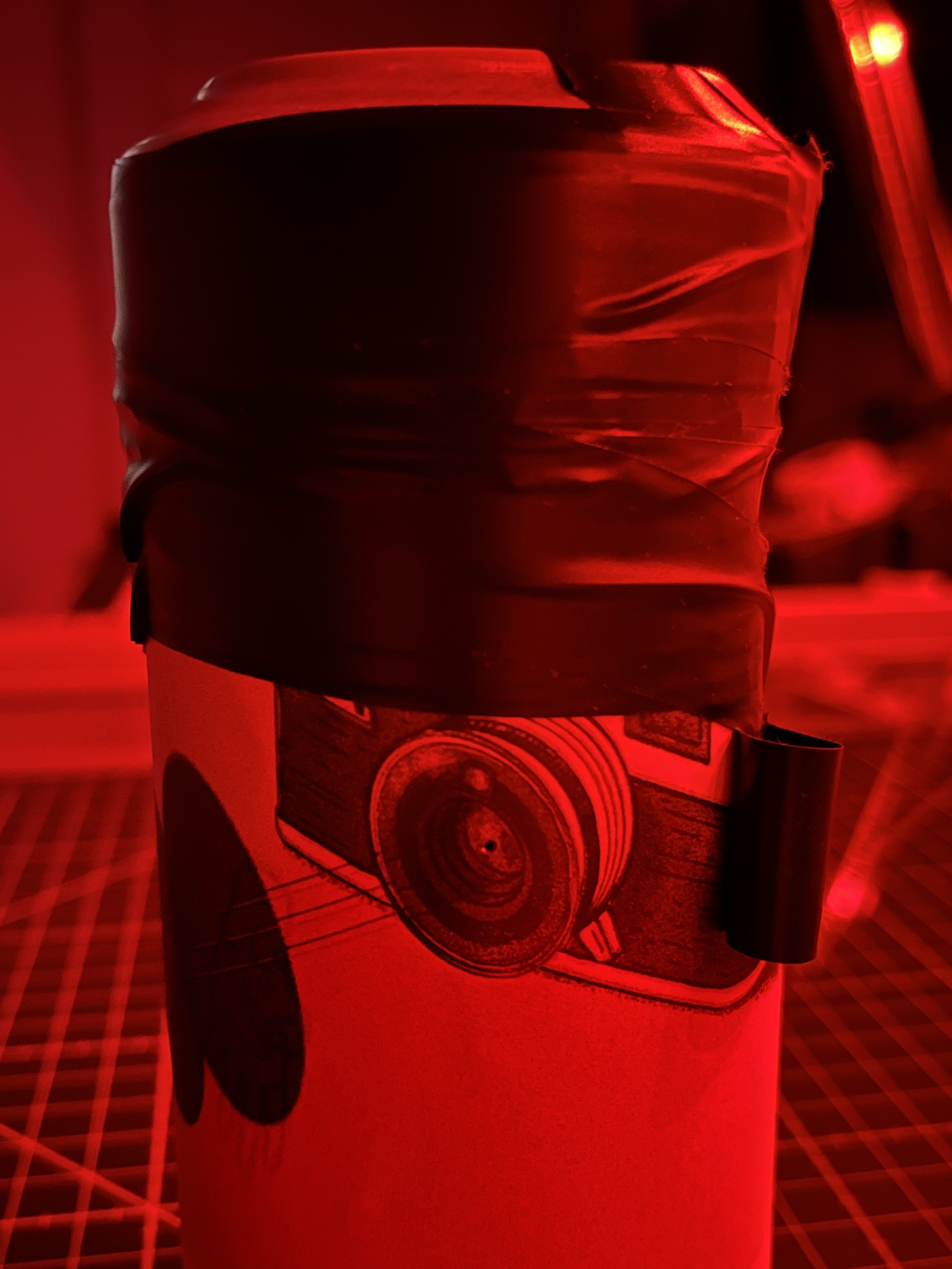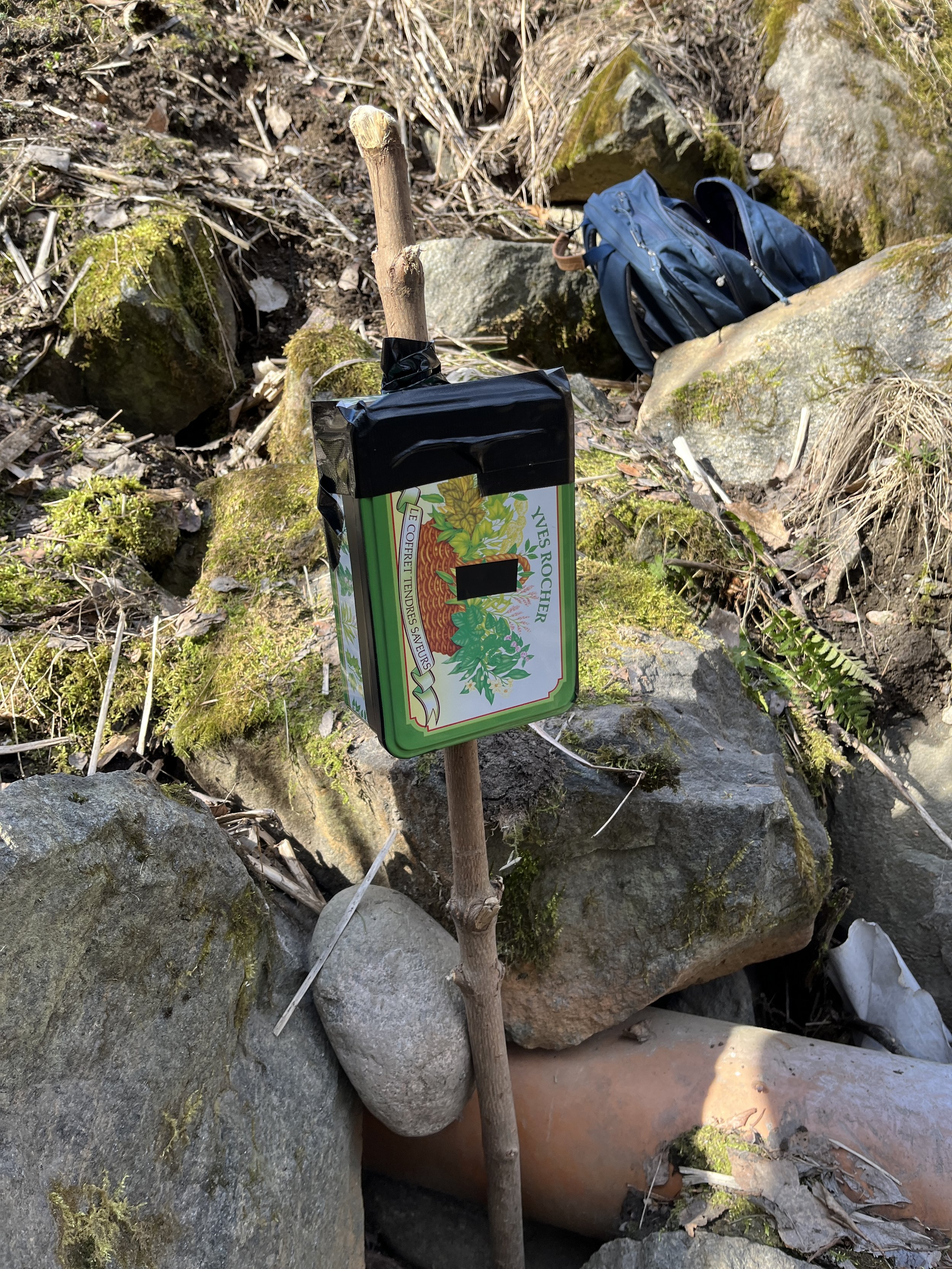
Pinhole Journal
“It`s all about the light.”
This journal presents my personal trials with the use of camera obscura to create photographs and visual projects. I explore the alternative ways to process pictures and learn about the sustainable darkroom. Along the way, I wish to share these experiences to others, make new connections and discover how the world can be recorded with the natural phenomenon in which the rays of light form an image.
A pinhole camera is a simple camera without a lens but with a tiny aperture (the so-called pinhole)—effectively a light-proof box with a small hole in one side. Light from a scene passes through the aperture and projects an inverted image on the opposite side of the box, which is known as the camera obscura effect. The size of the images depends on the distance between the object and the pinhole.
26.3.2025
#1 — Beercan pinhole camera with Ilford RC paper which was developed with caffenol-C bath. Unfortunately, the picture got overexposed and turned out really dark but still created a very eery view of a small creek in Lahti. Caffenol-C processing is an alternative way to process traditional photographic paper without darkroom chemicals. My current recipe uses a mixture of instant coffee, vitamin-C tablets and washing soda.
60.9720069, 25.6736413
30.3.2025
#2 — Beercan pinhole camera with Ilford RC paper. Exposure time 5 days. The light trail is from the rising and setting sun. The beercan was taped to our gardens tall oak tree. I intentionally overexposed the paper so that the sun burns and creates the negative image on paper directly (no developers or chemicals needed). The paper negative is then scanned to a digital copy with a flatbed scanner. With this technique you can leave the pinhole camera for a long time to expose your view. The longest exposure in the world is approx. 8 years!
60.9712648, 25.6758692
3.4.2025
#3 — Cardboard box pinhole camera and Ilford RC paper developed with caffenol-c. Exposure time 1 minute and 25 seconds. Indoor shot with strong sunlight from windows. As the box lack some depth, the exposure has strong circular shape and the exposure doesent cover the whole paper. Interesting effect. Pinhole cameras create a paper negative image, which needs to be processed to positive either in darkroom or with flatbed scanner etc.
60.9711449, 25.6762337

#4 — A larger recycled tin container pinhole camera with Ilford RC paper which was developed with caffenol-c bath. Sunny midday. This time I managed the exposure time and the development time in process well and got a good paper negative of the view. I processed the negative with a flatbed scanner and Photoshop CC. I like the format and size of this can. While the beercan pinhole cameras work well too, I do like the way I can easily re-load an re-use these recycled tin containers with a lit.
60.9720069, 25.6736413

#5 — Recycled tinbox pinhole camera with Ilford RC paper. Exposure time 1 minute and 30 seconds. Sunny midday. I know the exposure time was good. However, the tinbox inlays were possibly still too reflective and the exposed light got bouced all over in-camera and to the negative – creating a multilayered misty photograph. There might have been something off with my homemade caffenol-c developer too. I had the camera in the same location as the #4 pinhole camera. I processed the negative with a flatbed scanner and Photoshop CC. I will paint the inside of the box black for future trials.
60.9720069, 25.6736413

7.4.2025
#6 — Recycled candy tincan with Ilford RC paper developed with caffenol-c mixture. Exposure time two minutes. Sunny clear sky with harsh shadows. Accidental double exposure due to failed removal of “shutter-tape”.
60.9687755, 25.6752570

7.4.2025
#7 — Recycled tincan with Ilford RC paper developed with caffenol-c mixture. Exposure time one minute. Sunny clear sky, midday. Paper must have been loaded wrong side up and the paper recorded the surface of the tin too. Exposure made handheld (just to try it out). I think I have the caffenol-c development under better control and only need to focus on the other parts of taking picture to fine tune my workflow. The tincans I am now using create good sized paper negatives which I like a lot!
60.9680572, 25.6750974
18.4.2025
#8 — Recycled cylinder tincan with Ilford RC paper developed with caffenol-c mixture. Exposure time one minute. Sunny but some clouds. Family having a palju bath outdoors. The print got a bit dark due to exposure time or developer bath.
62.034660, 27.161160
30.4.2025
#9 — Recycled cylinder tincan with Ilford RC paper developed with caffenol-c mixture. Exposure time one and a half minute. Cloudy. Camera placed on a backbag. Children`s stickhut in the forest.
62.035044128515175, 27.160305862449903
15.5.2025
#10 — Recycled rectangular tincan with Ilford RC paper developed with caffenol-c mixture. Exposure time one minute. Sunny with harsh shadows. Camera on a backbag.
60.99064213870839, 25.561637723151463
#11 — Recycled cylinder tincan with Ilford RC paper developed with caffenol-c mixture. Exposure time one minute. Sunny midday with harsh shadows. Camera fixed on a tripod with a buffy-scarf. This paper negative was also digitally test printed on a recycled cardboard as a signed fine art print (see picture below).
60.99097430188164, 25.562923006587205
30.5.2025
#12 — Recycled rectangular tincan with Ilford RC paper developed with caffenol-c mixture. Exposure time 5 minutes. A staged portrait. Indoors, low ligth from windows, some additional readinglamps on in the room. Camera fixed on a stool to keep it steady. Accidental double exposure due to light-leak? The camera was quite close, approx. 1,5 meters from subject but the cameras view and focal-lenght seems to create added distance. Also, the developing process seems to have been a bit off and has added some cloudy streaks to the paper negative – this adds to the picture now but the process of caffenol-c should do better – maybe a mistake in measurments? In the end, the “mistakes” and defects make this picture resonate with me more.
60.871042680380015, 25.2505890786404
